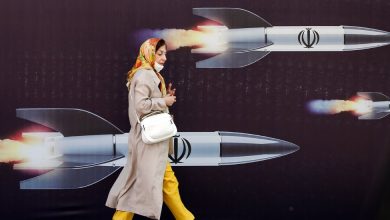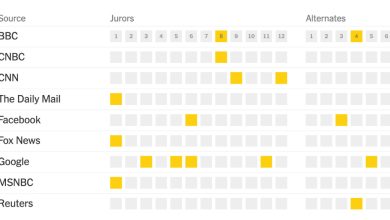High-tech Western Weapons Pose Challenge for Untrained Ukrainian Soldiers

Staring through the sight attached to an anti-tank gun camouflaged in netting and green underbrush, Junior Sgt. Dmytro Pysanka is greeted with a kaleidoscope of numbers and lines that, if read correctly, should give him the calculations needed to fire at approaching Russian forces.
Still, errors are common in the chaos of battle. To negate them, the commanders of Sgt. Pysanka’s artillery unit on the frontline in southern Ukraine secured a high-tech range finder, supplied by the West over a month ago, which uses laser technology to measure distances.
But there’s an issue: Nobody knows how to use it.
“It’s like being given an iPhone 13 and only being able to make phone calls,” said Sergeant Pysanka, clearly exasperated.
More than 100 days after Russia invaded Ukraine, Western weapons have arrived at the Ukrainian front lines, with more promised. Just on Monday, Britain said it would send a sophisticated multiple-launch rocket system, following a similar pledge from the United States days earlier.
But training soldiers how to use the equipment has become a significant hurdle. With his aging anti-tank gun, built in 1985, Sergeant Pysanka and the weathered soldiers who crew the gun need all the help they can get.
The high-tech range finder, called a JIM LR — and likely part of the tranche of equipment supplied by the United States, said Sergeant Pysanka — seemed like a perfect choice. It can see targets at night and transmit their distance, compass heading and GPS coordinates. Some soldiers learned enough to operate it, but then rotated elsewhere, leaving the unit with an expensive paper weight.
“I have been trying to learn how to use it by reading the manual in English and using Google Translate to understand it,” Sergeant Pysanka said.
The dilemma underscores the array of issues that come with Ukraine’s frequent calls for high-end Western weapons and equipment, with requests for new anti-tank guided missiles, howitzers and satellite-guided rockets seemingly pinned to their hopes for victory.
Those needs are palpable in the region where Sergeant Pysanka’s battery is dug in, just northeast of the Russian-occupied port city of Kherson in southern Ukraine. The area was the site of a brief Ukrainian offensive in the past week that slowed as soon the Russians destroyed a key bridge; the Ukranian’s lack of longer-range artillery meant they were unable to attempt a difficult river crossing in pursuit, Ukrainian military officials said.
But beyond the urgent need for the tools of war, Ukrainian troops need to know how to use them. Without proper training, the same dilemma facing Sergeant Pysanka’s unit and their lone range finder will be pervasive on a much larger scale. Analysts say that providing weapons without sufficient training risks repeating the United States’ failed approach in Afghanistan, where it supplied the Afghan military with equipment that couldn’t be maintained without massive logistical support.
“Ukrainians are eager to employ Western equipment, but it requires training to maintain,” said Michael Kofman, the director of Russian studies at C.N.A., a research institute in Arlington, Va. “Some things it’s not easy to rush.”




